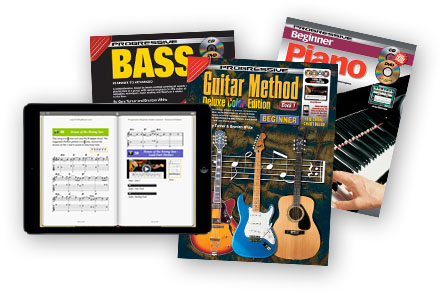Guitar Shredding with David Dowling
Presented by LearnToPlayMusic.com, Music Space #12’s special guest was rock guitarist, David Dowling. He discussed playing live and loud, and smoke and mirror techniques for easier guitar shredding! We’ll go into some of his great guitar tips on the blog now, along with tips that make for a great rock/metal guitarist!
What is Guitar Shredding?
Guitar shredding is essentially making a statement in playing fast guitar! It’s “how many notes can you squeeze into a bar.” Guitar shredding suits a very particular context and “voice,” and it needs to fit into what the music needs. When done right, and done in context it can provide a really great boost! It fits in well when you’re getting up to a particular crescendo or important moment in a song and you need something to give it a bit more oomph or life.
Smoke and Mirrors
Smoke and mirrors is the term that David uses to describe his ways of getting around his own limitations. They are essentially “short-cuts” that help you to achieve certain techniques faster. They’re useful tips to have up your sleeve, not just because it can make playing easier, but because if you are playing a long set with a lot of guitar shredding or tapping your hands can get worn out quite quickly. Going easier on your hands by using these techniques such as guitar shredding can also help you to play longer and more consistently.
Easier Alternate Picking
When you have a complicated alternate picking pattern, such as picking down on one string and then moving to pick up on the next string there can be a lot for your brain to think about in terms of start, stop, direction. In a situation where the tempo calls for something really fast, you want to avoid this method of alternate picking and use something easier, such as maintaining the same pick direction as you move to the next string. The less distance your pick has to travel, the faster you can pick your strings. By trying to focus on riffs that use this technique, you will have more control over your picking patterns, and be able to play them more quickly and easily. This helps you to get the most from each position, while allowing more time for changes.
Easier Tapping
An interesting technique that may help your tapping is to add another finger into the mix (such as your middle or ring finger). Not another tapping finger, but a picking finger! This will put you in a position where you can do standard legato techniques whilst breaking up the workload between both hands. This is a technique you could call hybrid tapping, as it’s a combination of hybrid picking and tapping. You can get a lot of notes coming out, but not a lot of work between both hands as you are separating the work between the two. Using your picking finger to pick certain notes on the fretboard whilst tapping will help you to produce notes that are more pronounced and clear as well. It’s almost like approaching the guitar like a piano; you have both hands available to you, so when a piece of music calls for more notes, why not use both hands to achieve that.
Using a String Dampener
A string dampener can greatly help the sound of your playing when guitar shredding or tapping. With tapping in particular you get a bit of brushing against strings which can create some unwanted noise, so if you engage one of these it will help to limit this. You can use anything from a soft, small fabric hair tie to an old sweat band. The larger ones are easier to move out of the way quickly if required.
Correct Picking Technique
There are times when shortcuts can work and help you, but other times where they can be detrimental to your technique. This leads us to the importance of using a correct picking technique. It is important to not resort to using “short-cuts” instead of developing and maintaining a good picking technique. It will be tempting to tense up and pick incorrectly, because in the short term it makes it easier to get a faster guitar shredding sound. This sound however is very different sonically. A proper picking technique will give you a good and full sound, where an incorrect technique can provide and messier and softer sound.
Practicing Tips for Faster Guitar Shredding
You should make sure you practice in the right way and relax. Imagine shaking your hand from the wrist, keeping it floppy. You want to use this technique, adding just enough control and picking loosely from the wrist. The less distance you travel up and down from the string, the less distance you have to travel back. Try to keep your pick close to the string, and play guitar shredding using the very tip of your pick.
Warm-up Exercises
Before playing, stretching out your wrist in particular can help to loosen you up. Try pushing your hand forward and back from the wrist, twisting gently from side to side to feel a stretch down your forearm (see 39:00 in the video). This should help to release the tension in your arm and help you to play guitar shredding for longer.
Which Pick is Best for Guitar Shredding?
Anywhere from 1mm or thicker is best for guitar shredding, as it adds more punch to your notes and promotes the use of good technique. It gives you just enough resistance to train your hand to relax. Try several gauges between 1mm and 2mm and see what produces a sound that works best for your guitar shredding.
Playing Live
When you’re ready to play live, you should make sure that you play comfortably within your skill range and know your limitations. Don’t try to play that new scale or lick you just learned, as in this high pressure situation you are more likely to make a mistake with pieces with which you are not familiar. Playing things you have practiced well and are comfortable with means that when you come to your moment, you will be more likely to succeed and provide a rewarding experience not just for yourself, but for your band members and the audience as well.
About David Dowling
David Dowling, hailing from Adelaide, has been playing and teaching guitar for around 25 years. He currently plays lead guitar for local original rock band, Guilt Free. Dave has a strong interest in developing advanced rock guitar techniques for his own enjoyment and that of others, and has developed an extensive set of personal teaching materials to effectively share his knowledge and approach with students. As much as is humanly possible, he always strives to deliver a good reason for “why” one should approach something one way over another.
Dave holds an honors degree in Music Studies from Adelaide’s Elder Conservatorium (2009), and has worked for Avid Technology as the regional Sibelius software support specialist and software demonstrator for Australia/New Zealand since 2009. He also teaches part-time at Adelaide University, and teaches guitar and music technology from his home studio in the Charles Sturt area of Adelaide. David Dowling is available to teach students in Adelaide, South Australia and surrounding areas. If you’re interested in face-to-face lessons, you can contact him at djd654321@gmail.com.
Check out Dave’s band, Guilt Free. Full album coming soon – recording late August, 2014!
http://www.reverbnation.com/guiltfree
http://www.facebook.com/guiltfreeband
About Music Space
At LearnToPlayMusic.com, we know there’s more to learning music than can be found in a book – it’s also about people. That’s why we bring you Music Space – the weekly live videocast with international music guests performing live and discussing the hows and whys of their experiences in music and life. Each episode spotlights a new music topic relevant to the show’s guest, covering anything from techniques, career advice, performing and songwriting tips, and essential music theory. Viewers have the opportunity to interact with us during the live videocast by asking questions and posting comments. Episodes are available on the Learn To Play Music Blog, which expands on each topic, invites further discussion, and features more great articles to help you learn to play the music you love.
Keep up to date with Music Space using Facebook, Google+ and Twitter, and interact with us and other viewers by using the #LTPMusicSpace hashtag.
Happy learning all,
The LTP Music Space Team
Presented by: +Learn To Play Music Inc.
Host: Gary Isaacs
Produced By: +Sarah Petrusma, +Pat McNamara
Technical Director: Ben Dring
Who is LearnToPlayMusic.com
LearnToPlayMusic.com is the world’s leading music education innovator and publisher of print, eBooks, apps and online lessons.
– Continue learning with Learn To Play Music at LearnToPlayMusic.com






























Leave A Comment
You must be logged in to post a comment.